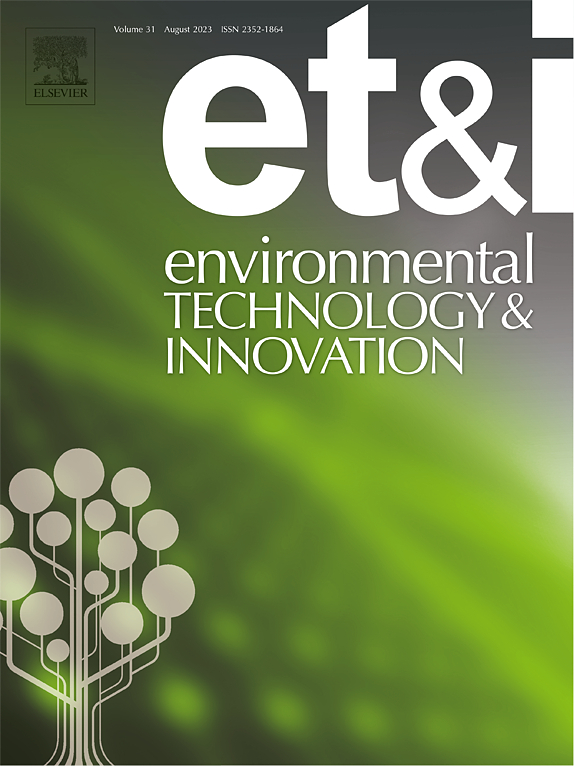二硝基苯胺类除草剂生物降解研究综述
IF 7.1
2区 环境科学与生态学
Q1 BIOTECHNOLOGY & APPLIED MICROBIOLOGY
引用次数: 0
摘要
二硝基苯胺类除草剂是一类高效广谱除草剂,由于其大量使用,其残留已成为一个重要的环境问题。微生物降解是农药在环境中的主要分解方式,微生物高效、无毒、无污染的优点使其在农药降解方面具有广阔的发展潜力。因此,对能高效降解二硝基苯胺类除草剂的菌株进行分离筛选,并对其降解途径和机制进行分析,可为二硝基苯胺类除草剂污染的修复提供理论基础。为促进二硝基苯胺类除草剂生物降解研究,本文对二硝基苯胺类除草剂降解微生物菌株、代谢降解途径、降解相关基因和酶的研究进展进行了综述。探讨了微生物降解二硝基苯胺类除草剂目前存在的问题及未来的研究方向,旨在为该课题的深入研究提供参考。本文章由计算机程序翻译,如有差异,请以英文原文为准。
Biodegradation of dinitroaniline herbicides: A comprehensive review
Dinitroaniline herbicides are a class of highly efficient and broad-spectrum herbicides, and due to their large-scale use, their residue has become an important environmental problem. Degradation by microorganisms is the main manner in which they can be decomposed in the environment, and microorganisms’ advantages of high efficiency, non-toxicity, and no pollution confer upon them broad potential for development in pesticide degradation. Therefore, the isolation and screening of strains that can efficiently degrade dinitroaniline herbicides and the analysis of their degradation pathways and mechanisms can improve the theoretical basis for the remediation of dinitroaniline herbicide pollution. To promote research on the biodegradation of dinitroaniline herbicides, this paper presents a review on the progress in the research on dinitroaniline-degrading microbial strains, metabolic degradation pathways, and degradation-related genes and enzymes. We also discuss the current problems in the microbial degradation of dinitroaniline herbicides and the direction of future research, aiming to provide a reference for in-depth studies on this topic.
求助全文
通过发布文献求助,成功后即可免费获取论文全文。
去求助
来源期刊

Environmental Technology & Innovation
Environmental Science-General Environmental Science
CiteScore
14.00
自引率
4.20%
发文量
435
审稿时长
74 days
期刊介绍:
Environmental Technology & Innovation adopts a challenge-oriented approach to solutions by integrating natural sciences to promote a sustainable future. The journal aims to foster the creation and development of innovative products, technologies, and ideas that enhance the environment, with impacts across soil, air, water, and food in rural and urban areas.
As a platform for disseminating scientific evidence for environmental protection and sustainable development, the journal emphasizes fundamental science, methodologies, tools, techniques, and policy considerations. It emphasizes the importance of science and technology in environmental benefits, including smarter, cleaner technologies for environmental protection, more efficient resource processing methods, and the evidence supporting their effectiveness.
 求助内容:
求助内容: 应助结果提醒方式:
应助结果提醒方式:


